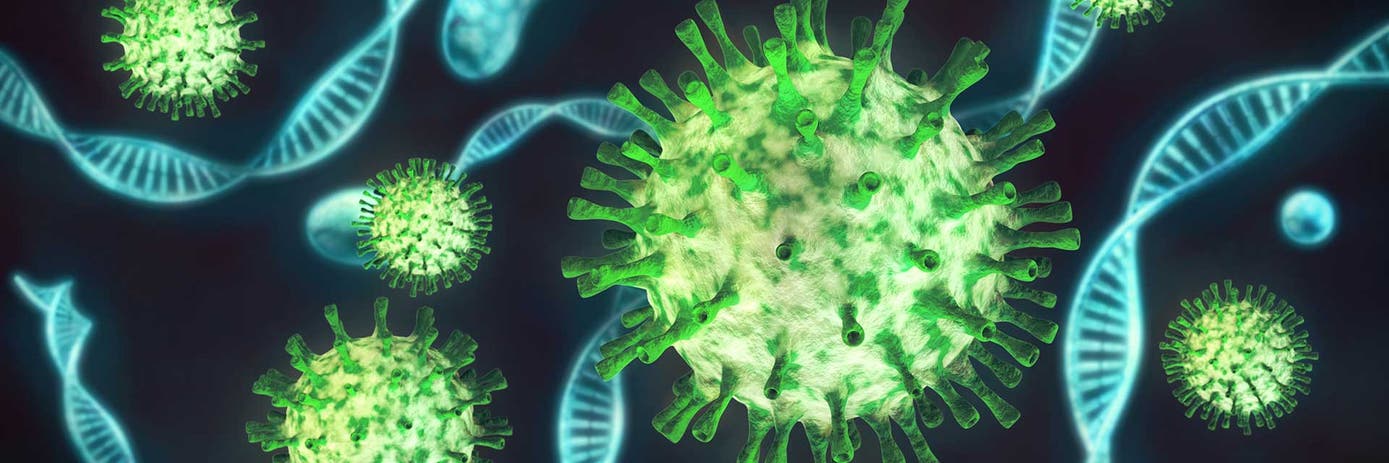The rapid deployment and success of mRNA-based COVID vaccines has transformed RNA therapeutics from a promising research area into a revolutionary medical reality. This breakthrough not only validated decades of foundational research but also catalyzed investment and innovation across the RNA landscape.
Today, we’re witnessing accelerated development in a wide range of RNA-based modalities—from siRNA and antisense oligonucleotides to sophisticated RNA-guided gene editing technologies.1 This growing interest has, in turn, intensified demand for high-quality plasmid DNA, which plays a key role in delivering and producing RNA payloads in both research and clinical settings.
With this surge in demand comes additional focus on the scalability and analytical consistency required in plasmid DNA manufacturing. A key bottleneck lies in the lack of robust, high-throughput analytical methods to assess key quality attributes throughout plasmid development.
In this blog, we’ll explore the diversity of plasmid types, the risks associated with compromised quality, emerging industry needs, and innovative solutions designed to overcome these pressing challenges.
Types and conformations of plasmid DNA
Plasmids are small, circular DNA molecules capable of autonomous replication in host cells. While naturally occurring in bacteria, they are widely engineered for diverse applications in biotechnology and therapeutics.
Plasmids come in various formats, each with specialized functions. Expression plasmids are engineered to produce a specific gene product—typically RNA or protein—within a target system. These constructs usually contain a promoter, gene insert, and other regulatory elements, and are integral to RNA-based therapeutics such as mRNA vaccine platforms and gene editing tools like CRISPR-Cas9. In contrast, cloning or vector plasmids are primarily used to propagate DNA fragments. Although they often lack expression elements, they are optimized for stable replication in host cells, making them valuable for DNA amplification.
Plasmid DNA also exists in one of three isoforms— supercoiled, linear, or open circular—each with specific applications. For example, supercoiled plasmid DNA is the most compact and biologically active form and is commonly used in the early stages of cell transfection and gene delivery due to its efficient cellular uptake. In contrast, linear plasmid DNA is generated by restriction enzyme digestion, which is preferred for mRNA synthesis applications and certain gene insertion techniques. The third form, open circular, occurs when one strand of the double helix is cut, resulting in a relaxed circle that can serve as an important intermediate in DNA repair studies.
Selecting the appropriate plasmid type and conformation is a critical decision that will directly impact downstream success—whether for gene expression, genome editing, or analytical validation. This careful selection process becomes even more crucial as applications scale up from research to clinical production.
The impact of low-quality plasmid DNA
Regardless of the chosen application, each plasmid DNA must be tailored to its intended application and characterized to ensure optimal performance. The consequences of low-quality plasmid preparations include:
- Contamination risks: Residual endotoxins, genomic DNA, and proteins can interfere with enzymatic reactions, compromise cell viability, and reduce overall process efficiencies.
- Increased background noise: Contaminants introduce variability and false positives, complicating data interpretation and compromising reliability.
- Reduced expression levels: Impurities can impact transcription and translation, resulting in suboptimal mRNA or protein production.
- Low transfection efficiency: Poor-quality plasmids show limited cellular uptake, leading to low yields and inconsistent gene delivery.
- Variability in results: Inconsistent plasmid preparations can complicate experimental reproducibility.
- Failed cloning efforts: Damaged or impure plasmid DNA can result in incorrect or inefficient insertions of target genes, resulting in faulty protein expression.
These consequences underscore the importance of implementing robust analytical methods for plasmid quality assessment to ensure reliable results and successful outcomes.
Ensuring quality at speed and scale
To meet the surging demand for high-quality plasmid DNA, manufacturers require methods that deliver quick turnaround times and simple workflows while maintaining reliable, reproducible results. With precious samples often in limited supply, low volume requirements have also become increasingly essential. Additionally, as more plasmid-based products advance toward clinical applications, compliance with regulatory standards is an essential requirement.
The LabChip™ Plasmid DNA Assay addresses these needs by streamlining plasmid quality control into a fast, automated workflow. By leveraging microfluidic electrophoresis, the assay enables researchers to quickly determine the size, concentration, and purity of plasmid DNA preparations with minimal sample consumption.
The assay offers several advantages, including:
- Fast and scalable: 70 seconds from sample loading to results with a 480 sample capacity
- Low sample volume: Requiring only 1-2 µL of starting material
- High sensitivity: Detecting impurities down to 25 pg/µL
- Ease of use: Minimal hands on time with a three-step set up
- Purity and sizing analysis: Providing results for supercoiled, linear, or both plasmid conformations
- Environmentally friendly: Reusable chips for up to 480 samples
- Suited for regulated environments: 21 CFR Part 11 compatible
Whether you are validating plasmid constructs for transfection, cloning, or therapeutic delivery, you can rely on the LabChip Plasmid DNA Assay to provide fast analysis. By ensuring that only the highest quality material moves forward, this assay will save you time, support regulatory compliance, and help streamline your workflows.
Reference:
- Rubio, I., Khimani, A., & Fraser, M. (2024, April 9). Novel RNA therapeutic Modalities. GEN - Genetic Engineering and Biotechnology News. https://www.genengnews.com/topics/translational-medicine/novel-rna-therapeutic-modalities/
For research use only. Not for use in diagnostic procedures.


































